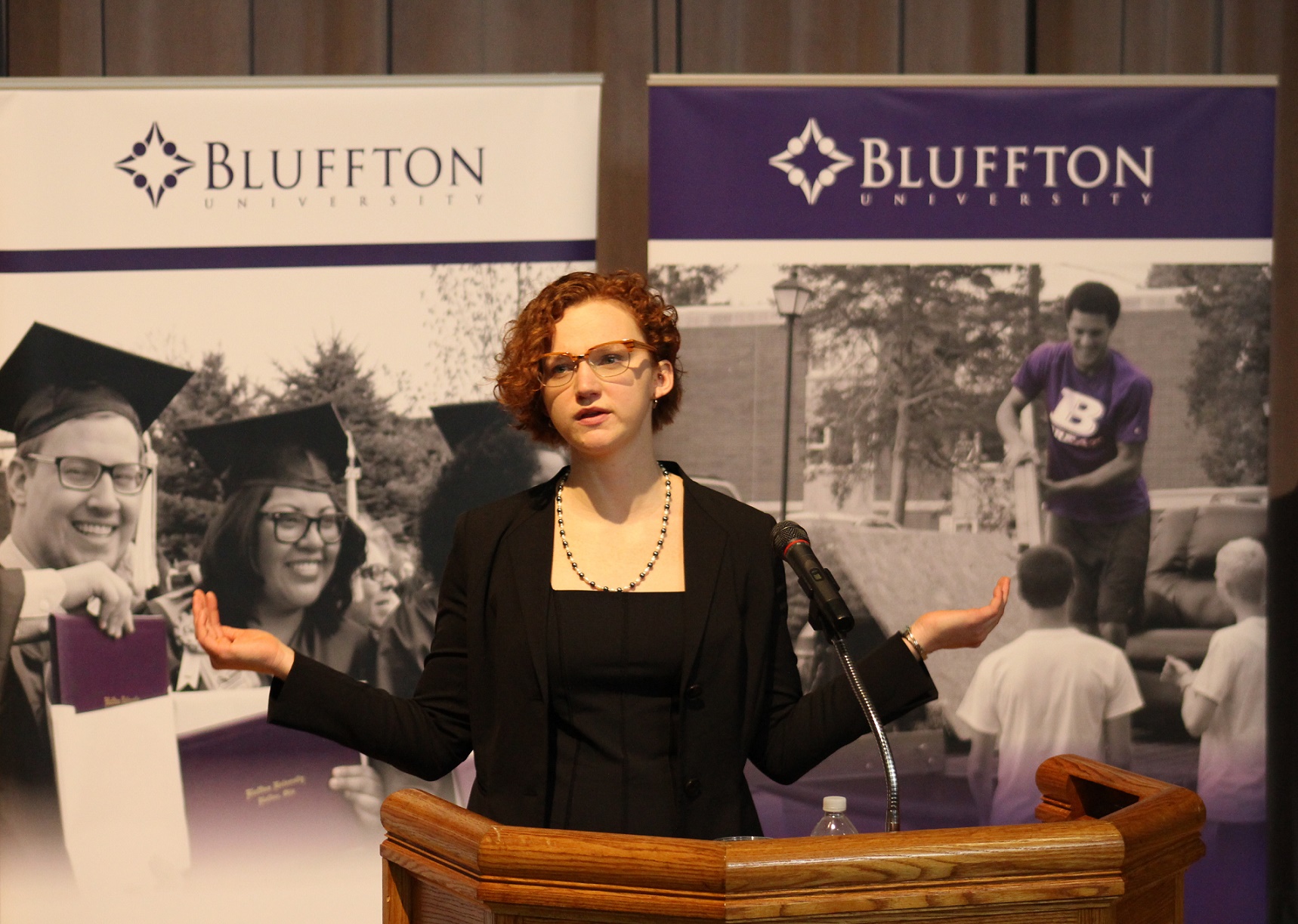“We see them, but we do not know them.” That was an observation a Mexican friend made to Rebecca Janzen, about the Low German speaking Mennonites in Mexico. Recently Janzen was the 2016 C. Henry Smith Peace Lecturer at Bluffton University, speaking on the topic “Small Signs of Pluralism in Mexico: Identification Cards and Other Images of the Low German Mennonites.”
The friend’s comment served as an example of the distance between the two cultures. However, during the lecture, Janzen also identified small signs of pluralism in Mexico—signs that the Mexican culture and the Low German Mennonite culture can co-exist peacefully while maintaining their differences.
During the presentation, Janzen explained that the Mennonites began moving to Mexico after the Canadian government insisted they send their children to English language public schools. In 1921, Mexico’s president allowed the Mennonites to move to Mexico in the hope that Mexican farmers could learn from their agricultural methods. The Mexican government allowed the Mennonites to maintain their distinct language and educational system. Nearly 5,000 Old Colony Mennonites, who spoke Low German, settled in the state of Chihuahua, and about 1,000 went further south to the state of Durango.
In her search for pluralism in Mexico, Janzen researched Mexican films, books, television shows and comics. On a trip to Mexico last year, she also uncovered identification documents from 1926 to 1951, issued by the Mexican state for all foreign nationals. She even found the documents of her own great-grandmother and those of five great- aunts and uncles who had migrated to Mexico.
“Being in the archives and seeing these papers about these people was a profoundly moving experience,” said Janzen.
Janzen says the Mexican government began requiring these identification papers for two reasons—to control the people, following the Mexican revolution, and to build a new society based on a new race that would combine the country’s white and indigenous people.
During this period, Mexico had a strong centralized and unitary ideology. However, she believes the government still allowed an element of pluralism, as found in the identification cards.
“As long as the policy requiring these identification papers was in place, that is, until 1951, the Mennonites complied with it, but all the while they showed themselves to be a distinct and separate people. I see this as a kind of resistance to Mexico’s all-encompassing state; that it was allowed suggests a form of pluralism,” said Janzen.
Regarding Low German Mennonite acceptance in current times, Janzen looked to the 2007 movie Silent Light and the book The Flower Women, a collection of photographs of Mennonite women taken by Mexican photographer Eunice Adorno.
According to Janzen, Silent Light inaccurately portrays Low German Mennonite dress, customs and ways. She says, “The film portrays them as two-dimensional objects onto which [Carlos] Reygadas [the film’s director] projects his ideas.”
Standing in sharp contrast are Eunice Adorno’s photographs. Adorno gained the trust of a Low German Mennonite colony’s self-taught female dentists, and because of that she was invited into their houses for coffee, for walks in their gardens, and to see their family pictures.
“The images that Adorno presents not only allow outsiders to know these Mennonites; they also indicate that, when approached respectfully, they are quite willing to let themselves be known,” said Janzen.
Janzen says the portrayals of Mennonites, from the identification cards to contemporary media, relate to peace on two levels.
“One could be called ‘basic pluralism.’ The story of the identification cards shows that the Mexican government, despite its unitary ideology, allowed the Mennonites to live as a relative separate people and that the Mennonites, despite some suspicions, cooperated. It was de facto pluralism, a tolerant modus vivendi, a form of peace,” said Janzen.
At another level, she sees a type of pluralism with understanding.
“We see this most clearly in the photography of Eunice Adorno. While acknowledging that the Mennonites remain a separate people, with their own customs and way of living, her images convey a remarkably rich understanding of their lives, and, I would say, invite others to understand the Mennonite world.”
And in conclusion, “Such a pluralism with understanding is the kind of peace that is needed in many places; it is human and life-giving.”
Rebecca Janzen is assistant professor of Spanish at Bluffton University, where she presented the lecture. She also spoke at Goshen College.
The Henry C. Smith Peace Lecture honors the late professor who taught at Bluffton from 1913-48, after spending 10 years at Goshen College. Smith was known for his books on Mennonite history and the peace tradition of the Mennonite churches. After his death in 1948, his estate established a trust in his name that funds projects—including the lectureship—that promote the Mennonite peace message. The lectureship is awarded each year to a faculty member from one of the Mennonite colleges, with priority given to Goshen and Bluffton faculty.









Leave a Reply
You must be logged in to post a comment.